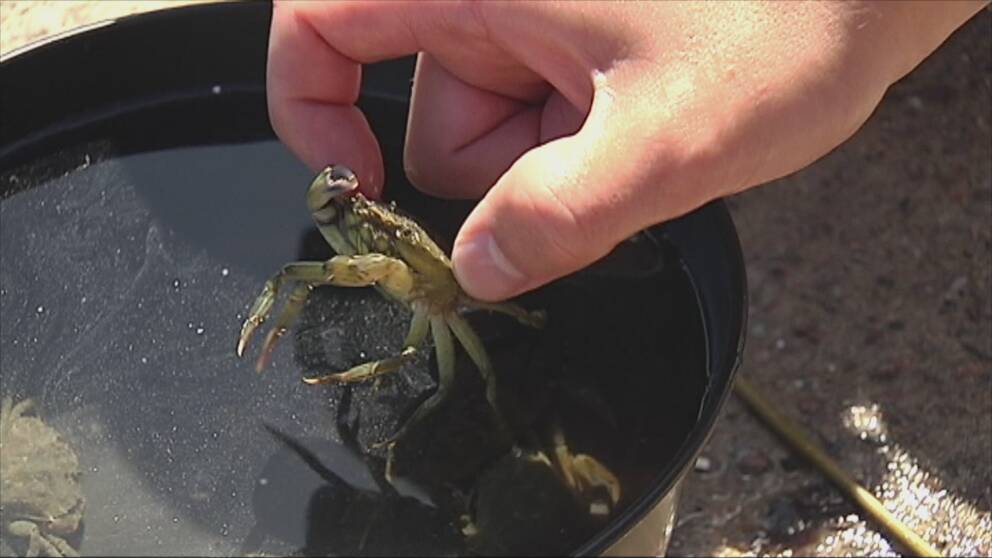The blue scrabble is quite small, with a back shield not exceeding four inches wide. But it eats both plants and animals, propagates rapidly, and is feared to be able to push away our usual beach crab.
The species has come to Europe with shipping from Asia, as free passengers in the ship's ballast water. It has been observed on the west coast for a few years.
Boy found 50 piecesThis summer, for the first time, it has been seen that the blue scrabble could reproduce here. The public has reported many findings.
- A private person in Stenungsund told us that his son went and turned stones at the beach and got together 50 small blue crabs in half an hour. Then people from the county administrative board went there and could pick up as many, says Matz Berggren, a researcher in marine sciences at the University of Gothenburg.
His assessment is that in some places the blue scrapers are so numerous that they must have been able to reproduce. Not all individuals can come in with ballast water.
- It's alarming. If they can continue to make successful reproductions, the species becomes established. Then there will be great competition with the Strabbrab. But because the blue crab eats everything, they can also change the ecology of the top beach zone where they are, down to two meters deep, says Matz Berggren.
Icing a threatThe blue crab is a cold water species that belongs in water around Japan and Korea. But winters with icing are estimated to be too tough for the species.
- We have received occasional finds from Koster to the Sound, including a number of small individuals in the Gulf of Laholms and Skälderviken. But the mass finds have been made around Gothenburg and Stenungsund, says Matz Berggren.
The blue scrabble is recognized by a skin blister in the "thumb fold" between the male's claws, square skin and transverse legs.
- It looks like toddlers when they fish, that some crabs in the bucket look different, says Matz Berggren.
Like beachesThe brush crab is a closely related species that has also been found on the west coast. It has a small hair claw on the claws.
- The blue crab kind of like beaches where it ripples in the water. The brush crab wants more protected, calm bays.
Matz Berggren doubts that it would make sense for the EU to put the blue crab on the list of invasive species. He wonders:
- What would the action program to get rid of them look like?
Below you can see a previous clip about the blue scraper from Lilla Aktuellt:

